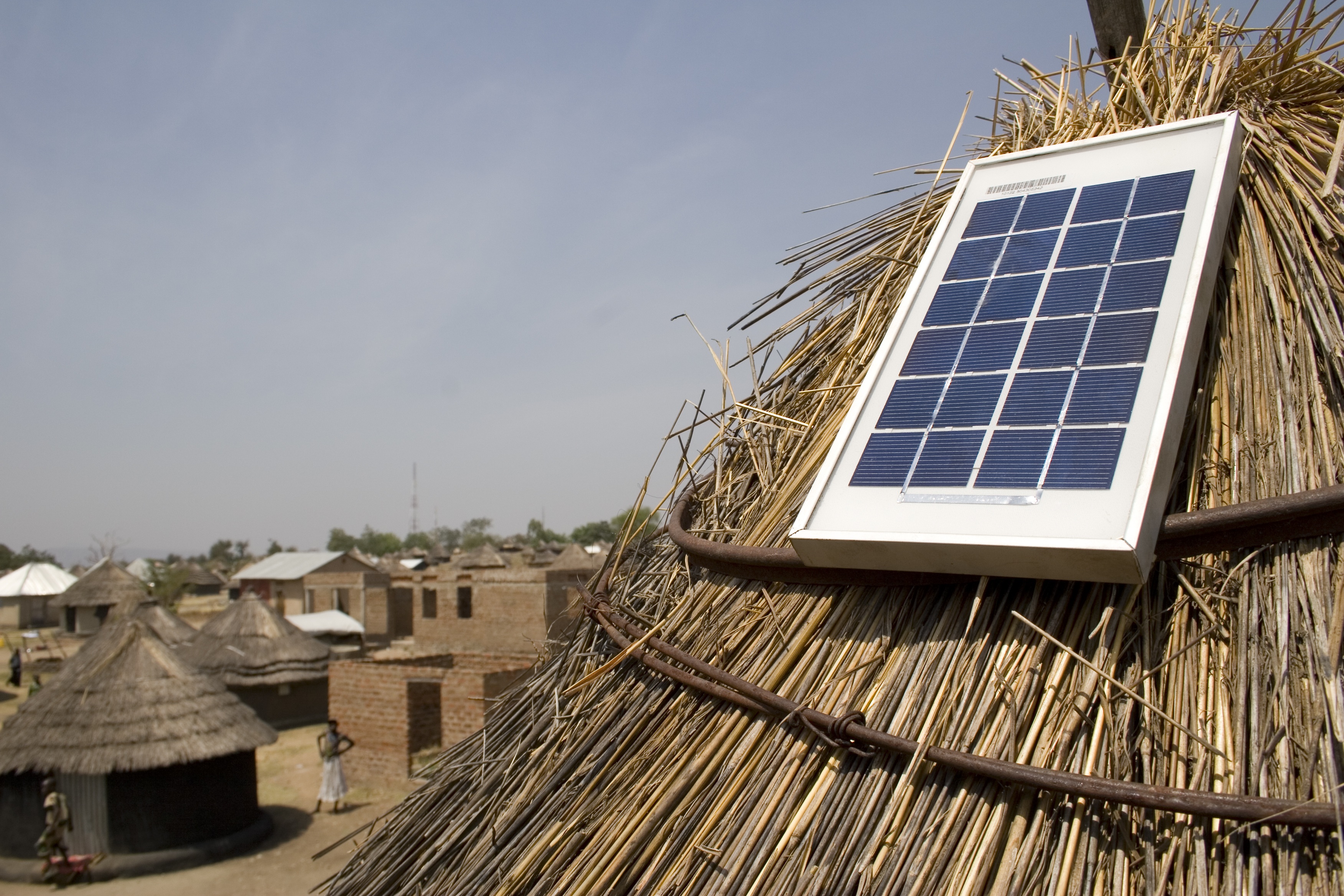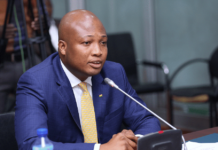
The problem is putting a brake on some of Africa’s most promising economies. Kenya, which sees itself as an emerging tech hub, has one of the worst rural electrification rates in East Africa, with just 23% of people able to access the national grid. Take a short drive from the bright lights of the capital, Nairobi, and many villages are in darkness as soon as the sun sets.
Solar power offers one obvious potential solution to these problems. In a region with an abundance of sunlight and few economic incentives to expand the grid to poor rural communities, solar energy has clear advantages. Why then is Africa not already awash with solar technology?
Mobile tech meets solar power
Simon Bransfield-Garth, the CEO of Azuri Technologies, says that the main barrier to uptake of the technology has traditionally been affordability. Despite the falling cost of solar technology, the price of a panel and battery starter kit remains far too expensive for many rural communities. The solution may lie in leveraging Africa’s mobile revolution. Azuri Technologies offers solar kits for households and small businesses, with the key advantage that the customer can repay the installation costs over a prolonged period, using the mobile phone network to buy credit. In addition to providing lighting, the kits allow customers to charge mobile phones, with larger models also allowing the user to watch television and access the internet.
“By combining mobile phone and solar power technology, we’re able to deliver a cost-effective and technically superior solution in some of the remotest regions,” Bransfield-Garth told African Business. Using the mobile phone networks, the solar kits can be switched off if customers default on their payments or try to tamper with the kit to get free power.
“Our experience is that people don’t want to break into it”, says Bransfield-Garth. “The way we sell the product is through the community. There are lots of people who are making an income from the product as local agents or salesmen, so if people try and break into it they are depriving a neighbour of a living. That form of peer pressure has a strong influence.”
Another British company, BBOXX, has also developed solar products for the African market using 2G (voice) mobile network access. Having set up in East Africa in 2013, BBOXX now provides solar kits to more than 250,000 customers, with a main focus on western Kenya, western Uganda and northern Rwanda. Their ambition is to grow this figure to 4m by 2020.
For such a cash-poor region, the default rates on the pay-for-use business model are remarkably low. Chris Baker-Brian, BBOXX’s co-founder and Chief Technology Officer, says these are currently as low as 2-3% among their Rwandan customer base. The ability to switch the device off provides customers with a clear incentive to pay on time, he says, but most customers are keen to meet the repayments once they see the value of a reliable source of electricity to their income and living standards.
The other advantage of the credit-funded model is that solar power often proves to be far more cost-effective than traditional energy sources. BBOXX says its customers pay around $10-20 in monthly repayments on a three-year contract, depending on what package is bought. This compares to the $8-$14 households and small businesses would have previously spent on energy, plus as much as a day a week spent travelling to buy fuel, BBOXX says. Once the repayment is made, the customer then has free power, though the company would normally encourage them to move onto a maintenance plan. Unlike the roll-out of solar power in the west, neither BBOXX nor Azuri believe there is any need for subsidies or other incentives to make their projects sustainable. The right combination of new technologies, abundant sunlight and low electricity consumption makes African markets highly conducive to solar energy, says Baker-Brian.
Micro-grids
Offering solar power directly to households comes with limitations, however. These sorts of kits will never be able to generate enough electricity to support the development of manufacturing or to increase agricultural productivity at a regional level.
“For true human and economic development, there is a need for larger-scale systems that can power appliances,” says Emily Greenlee of Powerhive, Inc, a company headquartered in California. Powerhive develops and manages solar-powered “micro-grid” networks that provide electricity to an entire community and operate autonomously from the national grid.
Earlier this year, Powerhive became the first private company in Kenya to be awarded a licence to sell power to the public, having completed a pilot project in the southwest where it supplied electricity to 1,500 people. Greenlee says Powerhive aims to deploy to more than 100 sites in Kenya over the next year, with plans to pursue an “aggressive expansion plan in sub-Saharan Africa” beyond that.
At a time when falling commodity prices and a slowing Chinese economy are forcing many governments to re-think national electrification programmes, these local schemes could offer a more attractive alternative. The IEA estimated in 2011 that 52.5% of off-grid rural communities worldwide would be better suited to a micro-grid, rather than the national grid. Although fewer, stand-alone kits still accounted for as much as 17.5% of the population. With the emergence of an abundance of new technologies and eager investors, solar could offer a tantalising solution to Africa’s electricity problems.
By Charles Pembroke


























